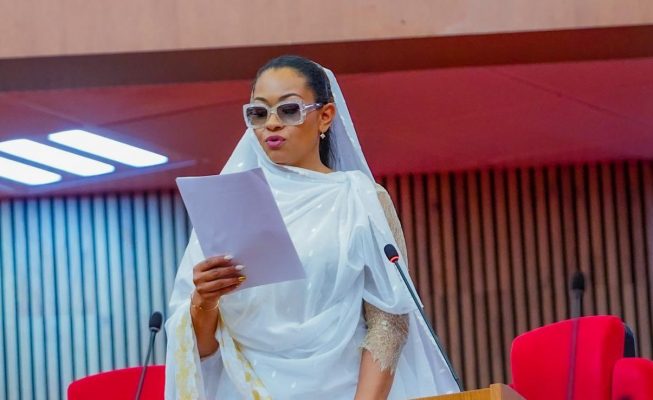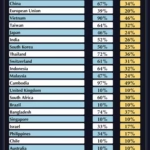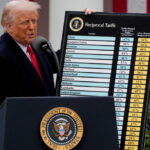Senator Natasha Akpoti-Uduaghan, the suspended lawmaker representing Kogi Central, has allegedly fingered the President of the Senate, Senator Godswill Akpabio, claiming he orchestrated a failed recall attempt against her, with approval from Kogi State Governor Usman Ododo.
Akpoti-Uduaghan, who spoke with Channels TV on Thursday, alleged that it was Akpabio who initiated the now-failed recall process against her.
According to her, the Senate President reportedly reached out to Ododo to initiate the recall process, noting that the Governor initially resisted this suggestion. She added that following Ododo’s reluctance, Akpabio contacted Yahaya Bello, the immediate past governor of Kogi State, who then allegedly directed his successor to commence the recall process.
The embattled senator, while fingering Akpabio, claimed that the move was riddled with fraudulent tactics and politically motivated vendetta.
She also alleged that fake signatures and forged voter lists were used to bolster the petition submitted to the Independent National Electoral Commission (INEC) on March 24, 2025.
She asserted: “He (Ododo) approved. They all his staff, all of them. Governor Ododo is the APC leader in the state, and for about three or four of the signatures there, the primary signature supporting the first petition, the letter, and the cover letter, were all his staff.
“Akpabio initiated this recall to silence me, and Governor Ododo greenlit it to protect vested interests.
“You know, there’s nothing that happens around the Senate that one does not get to know, either immediately or the day after. No, you have a way of verifying.
“I don’t work or deal with just rumours. I make sure I verify and that I have my primary sources. And the moment I got to know about it, I spoke to the correspondent from about three newspapers, Guardian, Punch and Premium Times, and I was like, Look, this is it. There’s a plan to recall me. Why don’t you put it out there? And they asked, Where is the evidence?
“Of course, I didn’t have any evidence, but it did happen. So shortly after, when the process started, they called on me. Senator, you told us. I was like, I did tell you I wanted you to blow it up. One thing about Nigeria sometimes is that, when you put out information and preempt them, they get to pull back.”
This comes after INEC announced that the recall petition against Akpoti-Uduaghan failed to meet the constitutional requirements outlined in Section 69(a) of the 1999 Constitution of the Federal Republic of Nigeria (as amended).
The recall petition, initiated by a group identified as the Kogi Central Political Frontier and allegedly backed by members of the All Progressives Congress (APC), was submitted to INEC in March with claims of garnering signatures from over half of the 474,554 registered voters in Kogi Central.
Pan-Atlantic Kompass had reported that the petitioners accused Akpoti-Uduaghan of “gross misconduct,” “abuse of office,” and “deception,” citing her suspension from the Senate on March 6, 2025, following a public clash with the President of the Senate, Senator Godswill Akpabio as a primary grievance.
Why Recall Bid Failed — INEC
However, INEC, in a statement released via its official X handle, stated that: “The petition for the recall of the Senator representing the Kogi Central Senatorial District has not met the requirement of Section 69(a) of the Constitution of the Federal Republic of Nigeria 1999 (as amended). Detailed statement shortly.”
Giving further updates, Rotimi Oyekanmi, Chief Press Secretary to the INEC Chairman has revealed that the electoral commission did not verify the signatures submitted in the petition to recall Akpoti-Uduaghan.
Instead, he said the commission only counted the number of signatures, which he claimed fell short of the required threshold to proceed with the recall process.
Speaking also with Channels TV, Oyekanmi clarified that INEC’s role at this stage was limited to a preliminary assessment of the petition.
Explaining the process, he stated: “INEC was never partisan. The recall process is provided for in the constitution that you reference section 69 and section 110 and INEC is the institution given the mandate to undertake the recall process.
“Now, the thing is simple, according to our regulations and guidelines, constituents in a constituency who wish to recall their representatives, will write a petition to the commission, a cover letter, but more importantly, this petition will be accompanied by signatures or more than one half of the total number of registered Voters in that constituency.
“Now, when we receive that petition, the first thing we do is notify the member who sought to be recalled. We’ll copy the presiding officer of a legislative house, and then we try to ascertain the number of signatures accompanying the petition.
“In the case of the Kogi central district, we received the petition and we received the cover letter. And of course, what Nigerians were saying was that we were taking sides. But what happened was, in the cover letter, the representatives of the petitioners did not include their address as required in our regulations and guidelines, and what we just did was ask them to supply that address.
“It has nothing to do with the petition. And of course, there is nowhere in the law where INEC is asked to reject a petition just because the cover letter did not contain the address, so there was no Hanky Panky in what we did now, having received the petition, we notified the member to be recalled, we copied the presiding officer, and then we did the preliminary thing, which is to ascertain the number of signatures, whether it is up to one half, that’s 50% plus one of the total number of registered voters in the senatorial district.
“And we also issued a statement, you know, to the public that, well, this is what we are doing. Now, it is only when that process is completed that we can move to the verification stage. Normally, they recall, after ascertaining the number of signatures, and, you know, establishing that it is more than one-half of the total number of registered voters in that constituency, we then move to verification, which is one of the most critical steps that we take on our way to the final stage.
“Verification takes place normally in the constituency. We go there, we have to cover all the polling units. We deploy our resources and use the list provided by the petitioners. We don’t use our registered voters register. In that instance, we go with the register of petitioners, containing the list of names and the signatures of the people who signed and all those who signed the petition are expected to come out, not just coming out.
“You have to bring your permanent voter card, and we will use our BVAS model of voter accreditation system to accredit and authenticate your PVC. Now it’s like a normal election. You open the polling unit at 8:30, and we close at 2:30. At the end of the process at the polling unit level, just like a normal election, the verification results are declared. Then, of course, we go to the ward level, collate and declare. Then, of course, we go to the local government level stage, collate and declare, before we go to the constituency. So it’s a rigorous process.”





